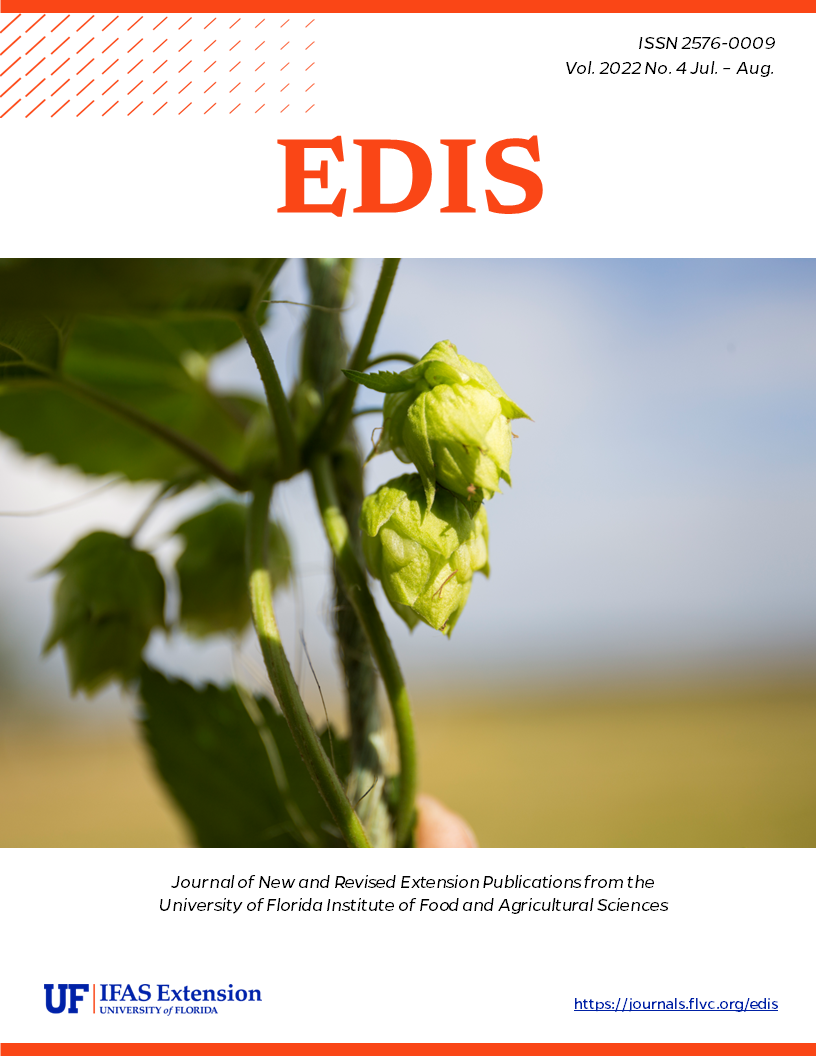Abstract
This publication presents information about the nonnative lizard Basiliscus vittatus (brown basilisk) in Florida. It contains information about brown basilisk identification, natural history, and distribution in Florida. The intended audience includes homeowners and land managers primarily in central and south Florida.
References
Fitch, H. S. 1973a. “A Field Study of Costa Rican Lizards.” University of Kansas Science Bulletin 50:39–126. https://doi.org/10.5962/bhl.part.25758
Fitch, H. S. 1973b. “Population Structure and Survivorship in Some Costa Rican Lizards.” Occasional Papers of the University of Kansas Museum of Natural History 18:1–41. https://doi.org/10.5962/bhl.part.17265
Glasheen, J. W., and T. A. McMahon. 1996. Size-Dependence of Water-Running in Basilisk Lizards (Basiliscus basiliscus). The Journal of Experimental Biology 199:2611–2618. https://doi.org/10.1242/jeb.199.12.2611
Hirth, H. F. 1963. “The Ecology of Two Lizards on a Tropical Beach.” Ecological Monographs 33:83–112.CISMA. https://doi.org/10.2307/1948557
Hsieh, S. T., and G. V. Lauder. 2004. “Running on Water: Three-Dimensional Force Generation by Basilisk Lizards. Proceedings of the National Academy of National Academy of Sciences 101:16784–16788. https://doi.org/10.1073/pnas.0405736101
Iannone, B. V., E. C. Bell, S. Carnevale, J. E. Hill, J. McConnell, M. Main, S. Enloe, S. Johnson, J. Cuda, S. Baker, and M. Andrew. 2021. “Standardized Invasive Species Terminology for Effective Education of Floridians.” FOR730/FR439, 8/2021”. EDIS 2021 (4):8. https://doi.org/10.32473/edis-fr439-2021.
Krysko, K. L., J. C. Seitz, J. H. Townsend, and K. M. Enge. 2006. “The Introduced Brown Basilisk (Basiliscus vittatus) in Florida.” Iguana 13 (1): 25–30.
Krysko, K. L., L. A. Somma, D. C. Smith, C. R. Gillette, D. Cueva, J. A. Wasilewski, K. M. Enge, S. A. Johnson, T. S. Campbell, J. R. Edwards, M. R. Rochford, R. Tompkins, J. L. Fobbs, S. Mullins, C. J. Lechowicz, D. Hazelton, and A. Warren. 2016. “New Verified Nonindigenous Amphibians and Reptiles in Florida through 2015, with a Summary of Over 152 Years of Introductions.” IRCF Reptiles and Amphibians 23: 110–143. https://doi.org/10.17161/randa.v23i2.14119
Krysko, K. L., K. M. Enge, and P. E. Moler. 2019. Amphibians and Reptiles of Florida. Gainesville: University of Florida Press. 706 pp.
Meshaka, W .E., B. P. Butterfield, and B. J. Hauge. 2004. The Exotic Amphibians and Reptiles of Florida. Krieger Publishing Company, Malabar, FL. 155 pp.
Rand, A. S., and H. Marx. 1977. Running Speed of the Lizard Basiliscus basiliscus on Water.” Copeia 1967:230–233. https://doi.org/10.2307/1442206
Savage, J. M. 2002. The Amphibians and Reptiles of Costa Rica: A Herpetofauna between Two Continents, Between Two Seas. Univ. Chicago Press, Chicago.

